- Home
- Prelims
- Mains
- Current Affairs
- Study Materials
- Test Series
 EDITORIALS & ARTICLES
EDITORIALS & ARTICLES
24th Nov 2021
GURU NANAK JAYANTI 2021: WHEN IS GURPURAB?
Recently, the birth anniversary of the first of the ten Sikh gurus, Guru Nanak Dev Ji was observed.
Guru Nanak

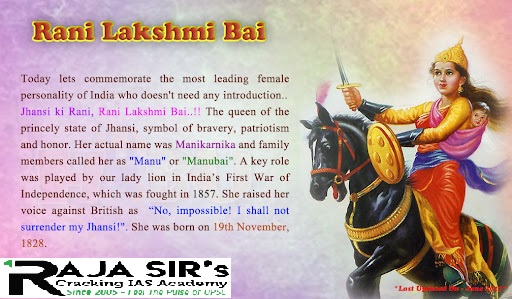

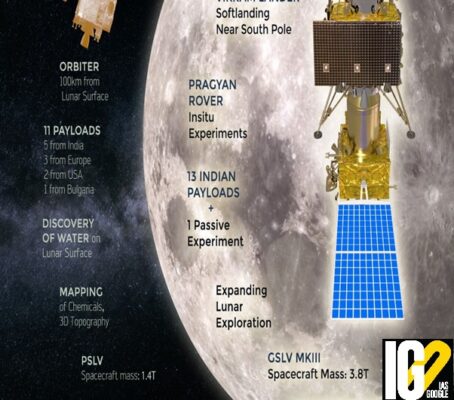

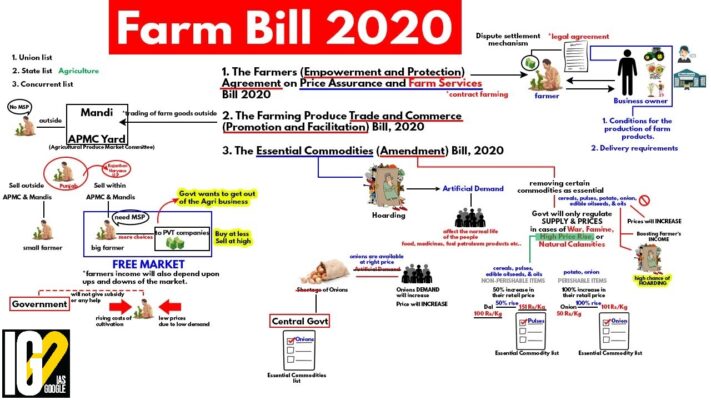
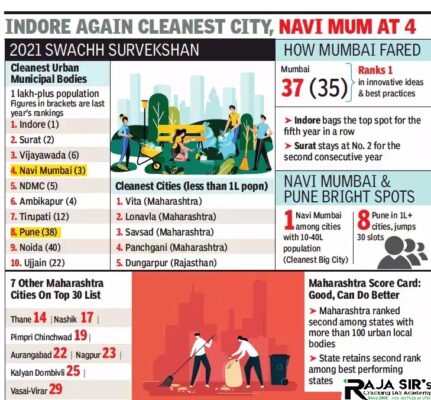

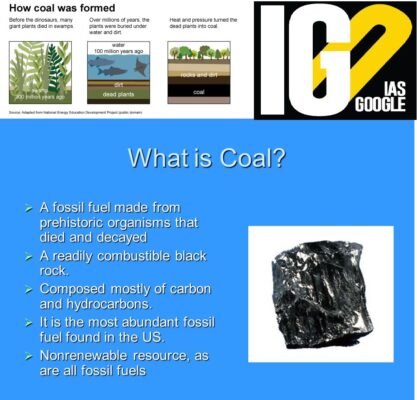



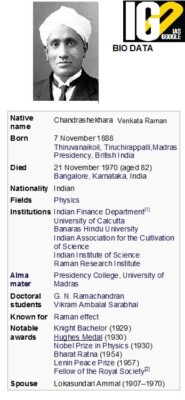

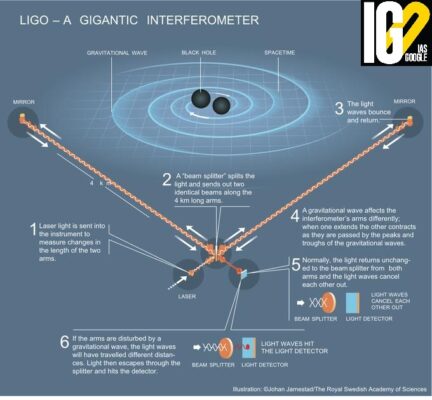

- Born: 15 April 1469 in Delhi Sultanate.
- He was the founder of Sikhism and is the first of the ten Sikh Gurus.
- His birth is celebrated worldwide as Guru Nanak Gurpurab on Katak Pooranmashi.
- Nanak is said to have travelled far and wide across Asia teaching people the message of Ik Onkar (one God).
- He believes that God dwells in every one of his creations and constitutes the eternal Truth.
- Nanak's words are registered in the form of 974 poetic hymns, or shabda, in the holy text of Sikhism, the Guru Granth Sahib.
- Guru Nanak was born to Hindu parents though he believed that he was neither Hindu nor Muslim.
- At the age of 18, Guru Nanak married Mata Sulakkhani. He had two sons, Sri Chand and Lakshmi Chand.
- Vand Chakko
- Vand Chakko involves sharing with others and helping the ones in need.
- Kirat Karo
- Kirat Karo involves making a living honestly without exploiting anyone and without any fraud.
- Naam Japna
- It involves meditating on the name of God and controlling our evils
- Guru Nanak traveled the World intending to spread the holy message.
- He traveled to Mecca, Tibet, Kashmir, Bengal, Manipur, Rome, etc. on foot with his Muslim companion Bhai Mardana.
- He is also considered holy by Punjabi Hindus and Sahajdhari Sindhis across the Indian subcontinent. Among Muslims, he is considered to be a
- He initiated inter-faith dialogue in 16th century and had conversations with most of the religious denominations of his times.
- Died: 22 September 1539 in Kartarpur.
- It is a religion that originated in the Punjab region of the Indian subcontinent around the end of the 15th century CE.
- Sikhism is one of the youngest of the major religions and the world's fifth-largest organized religion.
- The five cardinal vices according to Sikhism include lust, greed, anger, worldly attachment, and pride.
- Sikhism teaches that men and women of every race and religion are equals.
- The khanda is the universal symbol of the Sikh faith.
- It is a double-edged sword with two daggers. The daggers represent spiritual and worldly powers bound by God.
- Sikhs often wear a steel bracelet called a kara, which is meant to remind them of the unity of God.
- In the Sikh faith, followers are taught that they should perform selfless service and charitable work. This is referred to as Tan (physical service), Man (mental service), and Dhan (material service).

- Rani Lakshmibai, the Queen of Jhansi, was popularly known as the 'Jhansi Ki Rani'.
- She was born into a Maratha Brahman household, with the maiden name Manikarnika.
- She learnt how to wield a sword and took training in archery, shooting and the ancient gymnastics artform Mallakhamba.
- She became proficient in horse riding and fencing under the guidance of Nana Saheb and Tatya Tope.
- She was married to Maharaja Gangadhar Rao Newalkar of Jhansi, who died later due to ill-health.
- The king adopted a son before his death, according to the Hindu tradition.
- The British, under doctrine of lapse policy, ordered the merger of Jhansi into the British Empire and assured the queen of pension.
- They did not recognise the adopted son as the legal heir to the throne.
- Rani Laxmibai did not agree to this contract in any way and refused to cede Jhansi to the British.
- She was a prominent figure in the 1857 Rebellion, which began on May 10, 1857.
- She became an icon for the Indian liberation movement against the British Raj for the entire country.
- She organised her troops and assumed the charge of the rebels in the Bundelkhand region, when the mutiny broke out in 1857.
- She, along with Tantia Tope and Nana Sahib went on the mount a successful assault on the fortress of Gwalior in Madhya Pradesh.
- She died fighting in the battle of Kotah-ki Sarai, on June 17, 1958
- Her tomb is situated in Gwalior's Phool Bagh area.
- Martyr's Day is observed in Jhansi, on November 19, the birth anniversary of Rani Lakshmibai, to commemorate the lives lost in the 1857 Rebellion.
- She is an icon for women's empowerment.
- Rani Laxmi Bai is known as the woman who changed the course of history through her courage, honour, and patriotism.

- Lord Dalhousie introduced a new policy of Doctrine of Lapse.
- He was the Governor-General of India from 1848 to 1856.
- According to this policy, if the king did not have any natural born heir, then the kingdom would lapse to the British or would be administered and occupied by the British.
- Eight Indian states were annexed under this policy which included Satara, Jhansi and Nagpur.
- Under the Doctrine of Lapse,
- The adopted son of Rani of Jhansi was denied the throne.
- The British denied pension to Nana Sahib, with the death of his foster father.
- The doctrine was one of the major political causes for the break out of the Revolt of 1857.
- Elements of the doctrine of lapse continued to be applied by the post-independence Indian government to derecognize individual princely families until 1971.

- Collision avoidance manoeuvre (CAM) is performed to mitigate the collision risk of satellites in orbit with other spacecraft or with space debris.
- The manoeuvre was to ensure a sufficiently large radial separation at the next closest conjunction between the spacecraft.
- Chandrayaan-2 mission is India’s second mission to moon.
- Aim: To study all the areas of Moon combining the exosphere, the surface as well as the sub-surface of the moon in a single mission.
- The scientific goals of the orbiter are:
- To study lunar topography, mineralogy, elemental abundance, the lunar exosphere, and signatures of hydroxyl and water ice.
- To study the water ice in the south polar region and thickness of the lunar regolith on the surface.
- To map the lunar surface and help to prepare 3D maps of it.
- It was designed such that it can distinguish between hydroxyl and water molecules, using sensitive instruments.
- Launcher: The GSLV Mk-III which is capable of launching 4-ton class of satellites to the Geosynchronous Transfer Orbit (GTO).
- GSLV Mk-III, the three-stage vehicle is India's most powerful launcher.
- Lander (named Vikram): Orbiter will observe the lunar surface and relay communication between Earth and Vikram.
- It was designed to execute India's first soft landing on the lunar surface.
- It was named Vikram after Dr Vikram A Sarabhai, the Father of the Indian Space Programme.
- It was designed to function for one lunar day, which is equivalent to about 14 Earth days.
- However, the lander crashed when it deviated from its intended trajectory while attempting to land in September 2019.
- Pragyan Rover was a 6-wheeled, AI-powered vehicle.
- A rover is a planetary surface exploration device designed to move across the solid surface on a planet or other planetary mass celestial bodies.

- It is a NASA robotic spacecraft currently orbiting the Moon in an eccentric polar mapping orbit.
- It studies the Moon by mapping the surface and composition to help scientists figure out the chain of events that created the Moon.
- Its mission duration was planned for one year, but has been extended numerous times after review by NASA.
- NEtwork for space object TRacking and Analysis (NETRA) project was launched by ISRO in 2019.
- It is an early warning system in space to detect debris and other hazards to Indian satellites.
- It will give India its own capability in space situational awareness (SSA).
- Space Situational Awareness (SSA) is the science of tracking objects that are in orbit and also predicting whet they would be at a given point in time.
- Farmers’ Produce Trade and Commerce (Promotion and Facilitation) Act, 2020:
- It seeks to give freedom to farmers to sell their produce outside the notified Agricultural Produce Market Committee (APMC)market yards (mandis).
- Aim: To facilitate remunerative prices through competitive alternative trading channels.
- Farmers will not be charged any cess or levy for sale of their produce under this Act.

- This act will open more choices for farmers, reduce marketing costs, and help them get better prices.
- It will also help farmers of regions with surplus produce to get better prices and consumers in areas with shortages at lower prices.
- Farmers (Empowerment and Protection) Agreement of Price Assurance and Farm Services Act,2020:
- Aim:
- To transfer the risk of market unpredictability from farmers to sponsors.
- To boost farmer income by reducing the cost of marketing.
- To give farmers access to modern tech and better inputs.
- Give farmers the right to enter into a contract with agribusiness firms, processors, wholesalers, exporters, or large retailers.
- It created a legal framework for contract farming.
- Contract farming: The farmers could enter into a direct agreement with a buyer before sowing season to sell their produce at pre-determined prices.
- The Essential Commodities (Amendment) Act, 2020:
- The law seeks to remove commodities like cereals, pulses, oilseeds, onion, and potatoes from the list of essential commodities.
- To do away with the imposition of stock holding limits on such items except under ‘extraordinary circumstances’ like war, famine, extraordinary price rise and natural calamity.
- Significance: attract private investment into the farm sector as well as bringing price stability.
- States will lose revenue as they will not be able to collect ‘mandi fees’ if farmers sell their produce outside registered Agricultural Produce Market Committee (APMC) markets.
- It decreases the involvement of middle men.
- It may eventually lead to the end of the minimum support price (MSP)based procurement system
- It would lead to corporatisation of agriculture as:
- Big private companies, exporters, wholesalers, and processors may get an edge.
- Powerful investors would bind farmers to unfavourable contracts with liability clauses.
- It will weaken the negotiating power of farmers.
- It may lead to exploitation by private companies.
- Big companies will have the freedom to stock commodities and they will become dictators to the poor farmers.
- Repealing a law is one of the ways to nullify a law.
- A law is reversed in the Parliament when there is no need for a law to exist.
- Legislation can have a sunset clause, a particular date after which they cease to exist.
- For example, the anti-terror legislation Terrorist and Disruptive Activities (Prevention) Act 1987, had a sunset clause, and was allowed to lapse in 1995.
- For laws that do not have a sunset clause, Parliament has to pass another legislation to repeal the law.
- Article 245 of the Constitution gives power to the parliament to make laws applicable throughout the country and state legislatures the power to make laws for the state.
- Parliament draws its power to repeal a law from the same provision.
- A law can be repealed either in its entirety, or to the extent that it is in contravention of other laws.
- Ordinance
- In case an ordinance is used, it would need to be replaced by a law passed by Parliament within six months.
- If the ordinance lapses because it is not approved by Parliament, the repealed law can be revived.
- Legislation
- The government can bring legislation to repeal the farm laws.
- It should be passed by both Houses of Parliament, and receive the President’s assent before it comes into effect.
- All three farm laws can be repealed through a single legislation.

- Swachh Survekshan is a ranking exercise taken up by the Government of India to assess rural and urban areas for their levels of cleanliness.
- Aim:
- To focus on ensuring complete access to sanitation facilities for all.
- To encourage large scale citizen participation and create awareness amongst all sections of society about the importance of Cleanliness of city.
- To foster a spirit of healthy competition among towns and cities to improve their service delivery to citizens, towards creating cleaner cities and towns.
- Organised by:
- In Urban areas: Ministry of Urban Development
- In Rural areas: Ministry of Drinking Water and Sanitation
- Implementation Partner: The Quality Council of India.
- Total cities participated in the survey: 4,320
- Areas of Evaluation:
- Areas of waste collection and sweeping
- The processing and disposal of municipal solid waste (MSW)
- Construction of toilets and the prevalence of open defecation
- Work that has been done to create awareness and behavioral change around cleanliness and sanitation, and capacity building.
- A new category of awards titled 'Prerak DAUUR Samman' was introduced which has a total of five additional sub-categories which are:
- Divya (platinum),
- Anupam (Gold),
- Ujjawal (Silver),
- Udit (Bronze), and
- aaRohi (Aspiring).
- Top 3 cities with a population of over 10 lakhs: 1. Indore (Cleanest city for the fifth consecutive year) 2. Surat and 3. Vijaywada
- Chhattisgarh has been awarded as the ‘Cleanest State’ of India for the 3rd consecutive year in the ‘more than 100 Urban Local Bodies’ category.
- Jharkhand won the ‘Cleanest State’ of India for the second time in the ‘less than 100 Urban Local Bodies’ category.
- Karnataka emerged as the ‘Fastest Mover State’ in the ‘more than 100 Urban Local Bodies’.
- Mizoram emerged as the ‘Fastest Mover State’ in the ‘less than 100 Urban Local Bodies’.
- 6 States and 6 UTs have shown overall improvement.
- Nearly 1,800 additional Urban Local Bodies (ULBs) have started extending welfare benefits to their sanitation workers.
- More than 1,500 additional ULBs have notified ban on the use, sale, and storage of non-biodegradable plastic bags; in total, more than 3,000 ULBs have notified this ban.
- All Northeast states have shown significant improvement in their citizens’ feedback.
- Swachh Bharat Mission is a massive mass movement that seeks to create a Clean India.
- Aim:
- To make the cities garbage-free.
- To sewage and safety management, making cities water-secure, and ensuring that dirty nullahs don't merge into rivers.
- To cover 1.04 crore households, provide 2.5 lakh community toilets, 2.6 lakh public toilets, and a solid waste management facility in each town.
-
- Community toilets will be built in residential areas where it is difficult to construct individual household toilets.
- Public toilets will also be constructed in designated locations such as tourist places, markets, bus stations, railway stations, etc.
- The program will be implemented over five years in 4,401 towns.
- The Mission will focus on the following factors:
- Source segregation of solid waste
- Utilizing the principles of 3Rs (Reduce, Reuse, Recycle)
- Scientific processing of all types of municipal solid waste
- Remediation of legacy dumpsites for effective solid waste management.
- All statutory towns will become ODF+ certified.
- All statutory towns with less than 1 lakh population will become ODF++ certified,
- 50% of all statutory towns with less than 1 lakh population will become Water+ certified
- All statutory towns will be at least 3-star Garbage Free rated as per MoHUA’s Star Rating Protocol for Garbage Free cities
- Bio-remediation of all legacy dumpsites.
- Presently India is the second-largest fish producing and second-largest aquaculture nation in the world after China.
- The total fish production is registered at 12.61 million metric tonnes.
- Fisheries is an important sector in India's Economy.
- Fisheries contribute to 1.07% of the total GDP of India.
- According to the National Fisheries Development Board, the Fisheries Industry generates export earnings of Rs 334.41 billion.
- It employs millions of people and contributes to the food security of the country.
- With a coastline of over 8,000 km, an Exclusive Economic Zone (EEZ)of over 2 million sq km, and with extensive freshwater resources, fisheries play a vital role.
- Marine Fisheries contribute to food security and provide direct employment to over 1.5 mn fisher people besides others indirectly dependent on the sector.
- Indian marine fish resources show rich species diversity with about 1,570 species of finfish and about 1,000 species of shellfish
- Marine Fisheries: 40 % of the total annual production of fish and being confined to coastal waters in the west from Kachchh, Malabar coast to Coromandal coast in the east
- Freshwater or Inland Fishery: 60 % of the country’s total fish production comes from inland fisheries.
- Estuarine Fisheries: It is confined to estuaries areas of the Ganga, Mahanadi, Godavari, Krishna, Cauvery, Narmada, and Tapi.
- It is also in the brackish water lakes of Chilka and Pulicat, and the backwaters of Kerala. Prawn is an important variety.
- Pearl Fisheries: Areas are usually on the ridges or rocks or dead corals forming extensive pearl banks at a depth of 18-22 m.
- Promote fish farming
- Enhance fish production from the Inland sector
- Increase fish seeds and quality seeds in the country
- Develop hatcheries and brood banks across all the agro-climatic regions of the country
- Generate employment opportunities
- Diversify aquaculture practices
- Provide sustenance to fish farmers
- Total assistance of Rs.135 Crores to cover all the inland fishery resources.
- The expenses of the developmental activities are shared between the Central and the State Government with the ratio of 75:25.
- Development of Freshwater Aquaculture
- Development of Brackishwater Aquaculture
- Development of Waterlogged Areas
- Coldwater Fisheries and Aquaculture
- Productive Utilisation of Inland Saline Soil Aquaculture
- Integrated Development of Inland Capture Resources
- National Scheme of Welfare of Fishermen
- To provide financial assistance to fishers for construction of house, community hall for recreation and common working place and installation of tube-wells for drinking water
- Development of Model Fishermen Villages.
- Group Accident Insurance for Active Fishermen and
- Saving-cum-Relief
- US has world’s largest supply of emergency crude oil (714 million barrels of oil) in its strategic petroleum reserve (SPR).
- Through the Strategic Energy Partnership (SEP), the US and India collectively seek to enhance energy security.
- Strategic Energy Partnership (SEP), established in 2018, recognizes the strategic importance of energy in the US-India bilateral relationship.
- It has four primary pillars of cooperation — oil and gas, power and energy efficiency, renewable energy, and sustainable growth.
- US-India Gas Task Force (GTF) had identified three key themes that need to be addressed to expand natural gas use in India and trade with the United States:
- natural gas pricing, markets and regulation
- strengthening of gas infrastructure
- stimulating natural gas demand growth

- Strategic petroleum reserves (SPR) are crude oil inventories held by the government, as well as private industry.
- Aim: To safeguard the economy and help maintain national security during an energy crisis.
- Under the International Energy Programme, a member country of International Energy Agency (IEA) has an obligation to hold emergency oil stocks equivalent to at least 90 days of net oil imports.
- The construction of the Strategic Crude Oil Storage facilities in India is being managed by Indian Strategic Petroleum Reserves Limited (ISPRL).
- It was created in 1998 to resolve the economic crisis which happened due to the Gulf War in 1990.
- The crude oil storages are constructed in underground rock caverns and are located on the East and West coast of India.
- Crude oil from these caverns can be supplied to the Indian Refineries either through pipelines or through a combination of pipelines and coastal movement.
- ISPRL is a wholly owned subsidiary of Oil Industry Development Board (OIDB) under the Ministry of Petroleum & Natural Gas.
- It has established Strategic Petroleum Reserves (SPR) facilities with total capacity of 5.33 million Metric Tonnes (MMT) at 3 locations:
- Vishakhapatnam
- Mangaluru
- Padur
- Government has also approved establishing two additional SPR facilities at (i) Chandikhol in Odisha and (ii) Padur in Karnataka.

- Coal is used to meet over 70% of India’s electricity needs, most of this coal comes from domestic mines.
- India produced 716 million tonnes of coal in 2020-21.
- Most of the country’s coal production is limited to Chhattisgarh, Odisha, Jharkhand, and Madhya Pradesh with a total production of over 550 million tonnes, contributing to over 75% of the country’s total coal production.
- India would increase the non-fossil fuel energy capacity to 500 GW by 2030, meet 50% energy needs from renewable sources and reduce carbon emissions by 1 billion in 2030.
- Currently India meets about 12% of its electricity needs from renewable sources.
- To reduce emissions by 1 billion tonnes, India would need to reduce its carbon output by 22% by 2030.
- Coal is a combustible black sedimentary rock, formed as rock strata called coal seams.
- It consists of carbon along with hydrogen, sulfur, oxygen, and nitrogen.
- It is formed when dead plant matter decays into peat and converted into coal by the heat and pressure of deep burial over millions of years.
- Electricity Generation
- Power generation is the primary use for coal worldwide.
- Thermal coal is burnt to produce electricity.
- Metal Production
- Metallurgical coal is a key ingredient in steelmaking.
- Coal converted to coke is used to produce around 70% of the world’s steel.
- It is widely used in the production of aluminum and copper.
- Cement Production
- By-products of coal combustion like fly ash play an important role in manufacturing cement.
- Gasification and Liquefaction
- Coal is heated and pressurized with steam to produce gas for domestic lighting, heating, and cooking.
- It is liquefied to make synthetic fuels like petroleum or diesel.
- Other Industries
- Other major users of coal include the paper, textile, and glass industries.
- It is used in the manufacture of carbon fiber and silicon metals, used for the household and other sectors.
- When coal is burned it releases several airborne toxins and pollutants like mercury, lead, sulfur dioxide, etc.
- Health impacts can range from asthma, breathing difficulties, brain damage, heart problems, cancer, etc.
- Coal-fired power plants, produce million tons of coal ash every year.
- The waste ends up in ponds, lakes, landfills, contaminating waterways and drinking water supplies.
- Other water impacts include:
- Acid rock drainage from coal mines
- Obliteration of mountain streams and valleys by mountain top mining.
- Mountaintop mining (MTM), is a form of surface mining at the ridge of a mountain.
- When coal is burned, it reacts with oxygen in the air to produce carbon dioxide.
- Carbon dioxide increases the temperature of earth above normal limits.
- Consequences of global warming include drought, sea level rise, flooding, extreme weather, etc.

- Aim: To assess the performance of various states on PM’s Smart Policing initiative.
- Survey conducted by: Indian Police Foundation
- Area of Evaluation:
- The survey questionnaire is composed of 10 queries, which included six indices of:
- Competence-Based Indicators: Dealing with issues such as police sensitivity, accessibility, responsiveness, and technology adoption.
- Value-Based indicators: It deals with the integrity of the police
- Index of Trust: It deals with the trust of common people in the police.
- The national average of satisfaction with the police is at 69%.
- In overall policing, Bihar scored the worst with 5.74
- In overall policing, Uttar Pradesh scored 5.81
- Top Rankers of the Survey: Andhra Pradesh, Telangana, Assam, Kerala and Sikkim.
- Bottom Rankers of Survey: Bihar, Uttar Pradesh, Chhattisgarh, Jharkhand and Punjab.
- Smart policing is an idea attempt to assess the performance of various states on PM’s Smart Policing initiative.
- S: Strict and Sensitive
- M: Modern and Mobile
- A: Alert and Accountable
- R: Reliable and Responsive
- T: Tech-savvy and Trained.
- Has Surface-to-Surface missile and Surface-to-Air missiles as well as surveillance radar
- The anti-submarine warfare capabilities are provided by the indigenously developed rocket launchers, torpedo launchers and ASW helicopters.
- The ship is equipped to fight under Nuclear, Biological and Chemical (NBC) warfare conditions.
- The remaining three ships of Vishakhapatnam class; Mormugao, Imphal and Surat are scheduled to be commissioned from 2022 to 2024.
- Boosting capacity and infrastructure:
- Boosting infrastructure and capacity of the police forces includes
- Increase in the number of police personnel in the country
- Improvement in recruitment
- Training and service conditions including upgradation and improving the infrastructure.
- Legislative Reforms:
- Enactment of the organized Crimes Act,
- A single police act for the country.
- Moving Police to the Concurrent List
- At present the police administration comes under the state list.
- Measures regarding registration of crimes
- Commissionerate system for large areas
- Changes in criminal procedure and evidence systems.
- Administrative Reforms:
- Separation of investigation from law and order
- Specialized wings for Social and Cyber Crimes
- Setting up authorities as directed by the Supreme Court
- Strengthening state machinery and linking prosecution with police.
- To tackle routine challenges faced by the police, highly qualified youths should promoted by government to be involved to look for technological solutions through hackathons.
- Technological Scaling:
- Modernization of the control room
- Fast tracking the Crime and Criminal Tracking Network System (CCTNS)
- CCTNS is a project under the government of India for creating a comprehensive and integrated system for effective policing through e-Governance.
- Development of a National Intelligence Grid (NATGRID)
- NATGRID is a secure database for information on terrorists, economic crimes, and similar incidents to help bolster India's capabilities.
- It explores health vulnerabilities and inequalities in cities in India.

- Life expectancy among the poorest is lower by 9.1 years and 6.2 years among men and women.
- Life expectancy at birth is the average life span of a generation subject to the age-specific mortality conditions of the year.
- The current life expectancy in 2021 is 69.96 years.
- Life expectancy in 2020 was 69.73 years, a 0.33% increase from 2019.
- A third of India’s people now live-in urban areas, 30% of them are poor.
- Covid toll was reported to be the highest for men in the age group of 35-69.
- Mobilization of public health action at multiple levels.
- Ayushman Bharat with Health and Wellness Centres (HWCs) and Pradhan Mantri Jan Arogya Yojana (PMJAY), reduces expenditure for secondary and tertiary care hospitalization for 40% of India’s population.
- 1,50,000 HWCs under National Health Mission (NHM) to provide Comprehensive Primary Health Care (CPHC).
- Community and Primary Health Centres under National programme for Healthcare of Elderly (NPHCE).
- Palliative care is provided to cases of Cancer, AIDS etc. under National programme for Palliative Care (NPPC).
- Providing financial support in the form of untied funds, for development of health facilities and ensuring services.
- Providing infrastructural support to State/UTs in constructing new health facilities for up-gradation of infrastructure.
- Operationalizing health facilities in rural areas through supply of equipment, drugs, and diagnostics.
- At the recent COP26, India made a commitment to reduce the total projected carbon emissions by one billion tonnes from now onwards till 2030.
- Emphasis is to put a major thrust on Sustainable Development in coal mining, taking care of its environmental and social impact.
- Sustainable Development Cell (SDC)in the Ministry of Coal has been established to advise, mentor and plan action to minimise the adverse impact of mining.
- Bio-Reclamation of mined-out land has already been taken up on a big scale by all coal companies through a massive tree plantation drive.
- Aim: To cover more than 12000 hectares of land for plantation which will help in decreasing the carbon content.
- Monitoring of such efforts is being done through remote sensing.
- First Mile Connectivity (FMC)is another major initiative by coal companies to minimise environmental pollution.
- In this process, coal is being transported through a conveyor belt from Coal Handling Plants to Silo for loading.
- The process reduces pollution as it eliminates the movement of coal through the road.
- Surface Coal Gasification Projects have been planned for Syn Gas production to be used either for production of Methanol/Ethanol, Urea or Petrochemicals.
- The use of dry fuel as green coal will result in lesser carbon footprint and environmental pollution.
- Syngas, or synthesis gas, is a fuel gas mixture consisting primarily of hydrogen, carbon monoxide, and very often some carbon dioxide
- Coal & Lignite companies have planned to install an additional 5560 MW of renewable capacity with an investment of over Rs. 15000 Crores.
- The use of LNG to substitute diesel consumption in mining and coal transport equipment has also been planned on a massive scale.
- Another initiative is gainful utilisation of Mine Water for irrigation and providing treated water for drinking to the rural populations in and around the command area of mining subsidiaries.
- Eco-Parks in the mining area are under different stages of development in all the subsidiaries
- Eco-Mine Tourism Circuit is going to start shortly in different coal companies to showcase efforts made by coal companies in environmental protection.
- Bamboo plantation along coal transport roads and on the edges of mines will help in minimising dust pollution.
- Extraction of sand from the Over Burden (OB) dump for use in construction for sustainable development.
- This will help in the availability of cheaper sand to masses for house and other construction.
- It will also minimise the land required for Over Burden dump in future projects.
- Sand produced through a large Sand Processing Plant is being used for low-cost housing schemes under Pradhan Mantri AavasYojana (PMAY).

- Born: 26 January 1915 at Manipur.
- She was a Naga spiritual and political leader who led a revolt against British rule in India.
- Died: 17 February 1993 at Manipur.
- She joined the Heraka religious movement, which later turned into a political movement seeking to drive out the British from Manipur and the surrounding Naga areas.
- She was arrested in 1932 at the age of 16 and was sentenced to life imprisonment by the British rulers.
- Nehru gave her the title of "Rani" ("Queen"), and she gained local popularity as Rani Gaidinliu.
- She continued to work for the upliftment of her people.
- She acted as an advocate of the ancestral Naga religious practices.
- She staunchly resisted the conversion of Nagas to Christianity.
- Tamrapatra Freedom Fighter Award-1972
- Padma Bhushan-1982
- Vivekananda Seva Award-1983
- Birsa Munda Award-posthumously

- Sir Chandrasekhara Venkata Raman, more popularly known as CV Raman was born in Tamil Nadu’s Tiruchirappalli on November 7, 1888.
- His initial research work as a student was in the field of optics and acoustic.
- In 1928, Raman discovered that when light traverses a transparent material, the deflected light changes its wavelength and frequency.
- It was because some of the incoming photons' energy was transferred to a molecule, giving it a higher level of energy.
- The phenomenon of exchange of energy and a change in light’s direction was named as the Raman effect.
- The phenomenon is used to analyse different types of material.
- It also led to the discovery of Raman spectroscopy as it is based on the Raman effect.
- He won Nobel prize in 1930 for Discovery of ‘Raman Effect’.
- He was the first Asian recipient of the Nobel Prize in the field of science.
- He also employed a monochromatic light from a mercury arc lamp which penetrated transparent material and was allowed to fall on a spectrograph to record its spectrum.
- Raman detected the lines on the spectrum, as they were later called 'Raman lines'.
- He experimented on diffraction of light by acoustic and ultrasonic and hypersonic frequencies.
- He published papers on the effects produced by X-rays on infrared vibrations in crystals when exposed to ordinary light.
- Areas of interests were optics of colloids, electrical and magnetic anisotropy, and the physiology of human vision.
- C V Raman founded the Indian Journal of Physics in 1926.
- He sponsored the establishment of the Indian Academy of Sciences and has served as President since its inception.
- He was elected a Fellow of the Royal Society in 1924 and was knighted in 1929.
- In 1948, the physicist established and endowed the Raman Institute of Research, of which he became the director.
- Raman was also named as the first National Professor by the new government of India in 1947.
- National Science Day is celebrated on 28 February each year in India to mark the discovery of Raman scattering.


- LIGO stands for Laser Interferometer Gravitational-Wave Observatory.
- It is a large-scale physics experiment and observatory designed to detect cosmic gravitational waves and to develop gravitational-wave observations as an astronomical tool.
- These observatories use mirrors spaced four kilometers apart which are capable of detecting a change of less than one ten-thousandth the charge diameter of a proton.
- IndIGO stands for Indian Initiative in Gravitational-wave Observations.
- It is also known as LIGO-India.
- It is an initiative to set up advanced experimental facilities for a multi-institutional observatory project in gravitational-wave astronomy in the Hingoli district of Maharashtra.
- The project will provide opportunities for scientists and engineers to dig deeper into the realm of gravitational waves.
- Gravitational waves are disturbances or ripples in the curvature of spacetime, generated by accelerated masses, that propagate as waves outward from their source.
- These cosmic ripples would travel at the speed of light, carrying with them information about their origins, as well as clues to the nature of gravity itself.
- Gravitational waves transport energy as gravitational radiation, a form of radiant energy similar to electromagnetic radiation.
- Albert Einstein predicted the existence of gravitational waves in 1916 in his general theory of relativity.









 Latest News
Latest News General Studies
General Studies